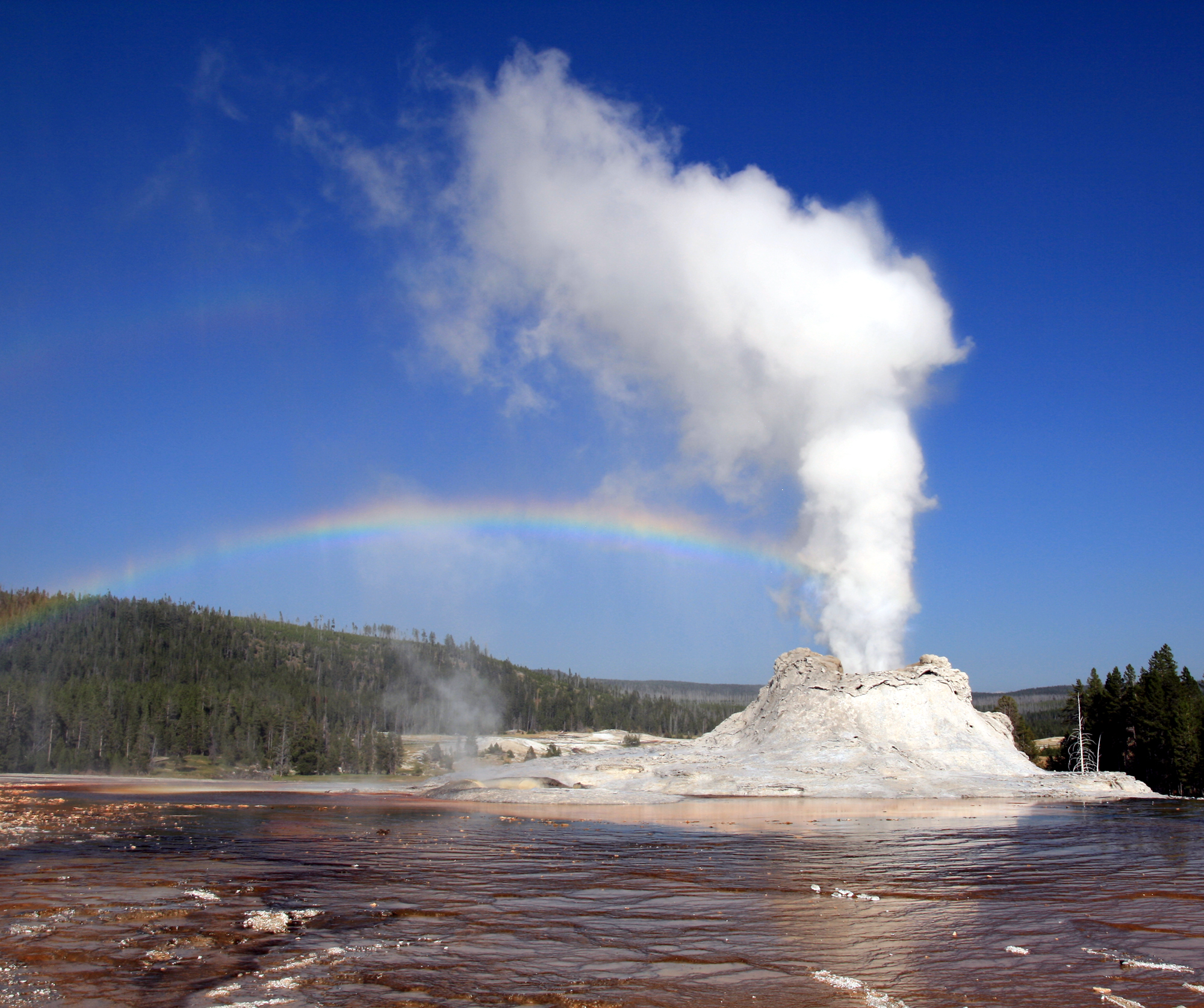The modern cities is growing at an alarming rate of 8-10% in terms of size and population.This is leading to a huge demand for energy such as electricity etc or daily needs of the people living in these cities.As the fossil fuels are slowly running out,we turn our attention to one of the biggest sources of energy available on the planet earth.Introducing to you “The Geothermal Energy”.
Geothermal energy is the heat from the Earth.Thermal energy is the energy that determines the temperature of matter. The geothermal energy of the Earth’s crust originates from the original formation of the planet (20%) and from radioactive decay of minerals (80%)It is produced due to the fission of radioactive materials in the earth’s core and some places inside the earth become very hot. These are called hot spots. They cause water deep inside the earth to form steam..It’s clean and sustainable. Resources of geothermal energy range from the shallow ground to hot water and hot rock found a few miles beneath the Earth’s surface, and down even deeper to the high temperatures of molten rock called magma.
Geothermal energy is fairly commonly available around the earth,even if not accessible directly.The top layer of the earth maintains a constant temperature of 50 to 60 degrees.It can be accessed through a variety of ways.We can use geothermal heat pumps to access this resource to produce electricity or to heat or cool buildings.They come in two varieties of accessing it.Such as the vapor dominated production or liquid dominated production.
The first of the geothermal generators are the LDRs or Liquid Dominated Reservoirs.LDRs are more common with temperatures greater than 200 °C .They are found near young volcanoes surrounding the Pacific Ocean and in rift zones and hot spots. Geothermal Flash Plants are the most common way to generate electricity from these sources. Pumps are generally not required, powered instead when the water turns to steam. Most wells generate 2-10 MWe. Steam is separated from liquid via cyclone separators, while the liquid is returned to the reservoir for reheating/reuse.Lower temperature LDRs require pumping. They are common in extensional terrains, where heating takes place via deep circulation along faults. Lower temperature sources produce the energy equivalent of 100M BBL per year. Sources with temperatures from 30-150 C are used without conversion to electricity for as water heating or heating the room or mineral recovery, industrial process heating and bathing in 75 countries. Heat pumps extract energy from sources at 10-20 C in many countries for use in space heating and cooling. Home heating is the fastest-growing means of using geothermal energy, with global annual growth rate of 30% by the year 2005 and 20% in the year 2012.
Another form of the heat pumps are the EGS or enhanced geothermal systems that actively injects water onto the hot spots and then pumps the water out.The water is injected under high pressure to expand existing rock fissures to enable the water to freely flow in and out. The technique was adapted from oil and gas extraction techniques.This is much better as the technique was adapted from oil and gas extraction techniques. However, the geologic formations are deeper and no toxic chemicals are used, reducing the possibility of environmental damage.Small Scale EGS are used in many parts of Germany and France.
There are various advantages of this geothermal energy.It is a renewable source of energy. By far, it is non-polluting and environment friendly. Geothermal energy can be used directly. In ancient times, people used this source of energy for heating homes, cooking, etc.Geothermal power plants don’t occupy too much space and thus help in protecting natural environment.Maintenance cost of geothermal power plants is very less.Unlike solar energy, it is not dependent on the weather conditions.Looking at these points we may wonder.Is this the amazing source that we need to replace the current market demand of the oils and natural gas?
Well although geothermal energy is extremely efficient there are quite a few drawbacks.Only few sites have the potential of Geothermal Energy.Total generation potential of this source is too small.Installation cost of steam power plant is very high.There is no guarantee that the t may release some harmful, poisonous gases that can escape through the holes drilled during construction.There is always a danger of eruption of volcano,due to the leakage of lava and shifting pressure.
There are some environmental effects of tapping this energy source.Fluids drawn from the deep earth carry a mixture of gases, notably carbon dioxide,methane,ammonia,hydrogen sulphide etc etc.These chemical gasses lead to acid rain if released into the air.In addition to dissolved gases, hot water from geothermal sources may hold in solution trace amounts of toxic elements such as mercury,arsenic,boron etc.These chemicals precipitate as the water cools, and can cause environmental damage if released and poison the water bodies.There are methods of reducing this risk factor.The modern practice of injecting cooled geothermal fluids back into the Earth to stimulate production has the side benefit of reducing this environmental risk.
On a front we may take.There are good and bad factors of it to consider.But here the pollution caused by electricity generation from geothermal sources are a mere fraction of those caused by fossil fuels.With further technological innovation and inventions to make this a much more environmentally friendlier source.We may be looking at a source of energy that will last the human race for many more centuries to come.

Leave a Reply